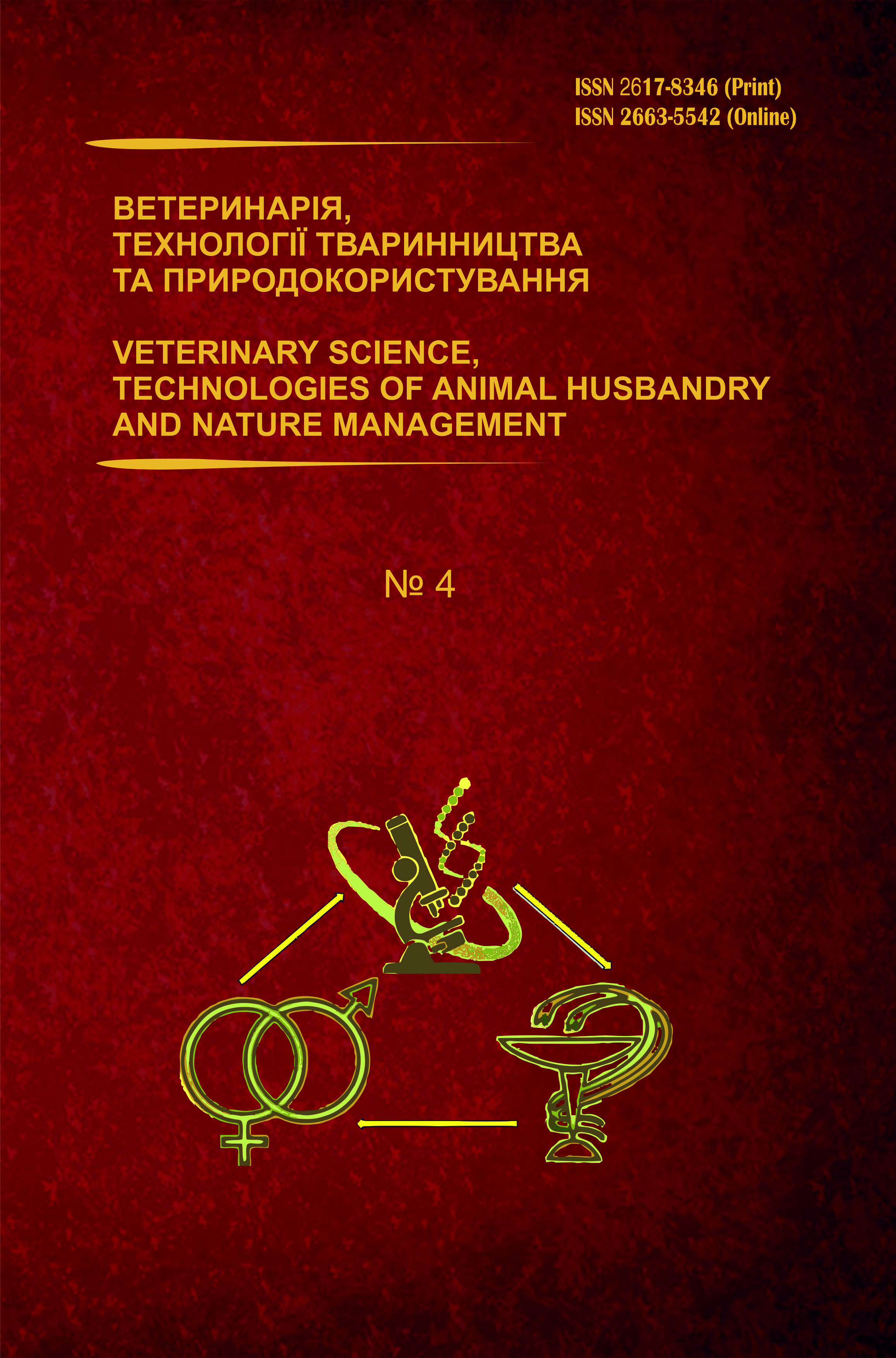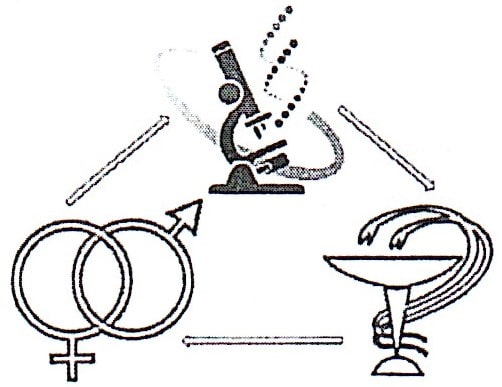Мікрофлора транссудату за інфікованого панкреонекрозу собак та її чутливість до протимікробних засобів
Анотація
У статті висвітлені результати мікробіологічного дослідження транссудату собак за інфікованого панкреонекрозу. Встановлено, що за панкреонекрозу собак інфікування підшлункової залози та навколишніх тканин найчастіше відбувається мікроорганізмами KES-групи (Klebsiella-Enterobacter-Serratia), друге місце за значимістю становить Enterobacter sakazakii, третє – Escherichia coli. Виявлені мікроорганізми проявляли проміжну резистентність до піперациліну в комбінації із тазобактамом, тобраміцину та сульфаметоксазолу. Найбільша чутливість встановлена до колістину сульфату та ципрофлоксацину.
Завантаження
Посилання
Bakker, O. J., Van Santvoort, H. C., Van Brunschot, S., Geskus, R. B., Besselink, M. G., Bollen, T. L., … Timmer, R. (2012). Endoscopic Transgastric vs Surgical Necrosectomy for Infected Necrotizing Pancreatitis: A Randomized Trial. JAMA, 307(10), 1053–1061. doi:10.1001/jama.2012.276.
Baron, T.H., & Morgan, D.E. (1999). Acute necrotizing pancreatitis The New England journal of medicine, 340 (18), 1412–1417.
Beger, H.G. (1986). Bacterial contamination of pancreatic necrosis. A prospective clinical study. Gastroenterology, 91 (2), 433–438.
Bradley, E. L. (1993). A Clinically Based Classification System for Acute Pancreatitis: Summary of the International Symposium on Acute Pancreatitis. Archive Surgery, 128(5), 586590. doi:10.1001/archsurg.1993.01420170122019.
Chiu, C. H., Lin, T.Y., & Wu, J. L. (1996). Acute Pancreatitis Associated with Streptococcal Toxic Shock Syndrome, Clinical Infectious Diseases, 22(4), 724–726. doi:/10.1093/clinids/22.4.724.
Cusack, T. P., Ashley, E. A., Ling, C. L., Rattanavong, S., Roberts, T., Turner, P., Wangrangsimakul, T., & Dance, D.A.B. (2019). Impact of CLSI and EUCAST breakpoint discrepancies on reporting of antimicrobial susceptibility and AMR surveillance. Clinical Microbiology and Infection, 25, 7, 910-911. doi:10.1016/j.cmi.2019.03.007.
De Waele, J.J., Vogelaers, D., Blot, S., & Colardyn, F. (2003). Fungal Infections in Patients with Severe Acute Pancreatitis and the Use of Prophylactic Therapy, Clinical Infectious Diseases, 37(2), 208–213, doi:/10.1086/375603.
Drudy, D., Mullane, N. R., Quinn, T., Wall, P. G., & Fanning, S. (2006). Enterobacter sakazakii: An Emerging Pathogen in Powdered Infant Formula. Clinical Infectious Diseases, 42, 7, 1, 996–1002. doi:/10.1086/501019.
DuPont, H. (2012). Approach to the patient with infectious colitis. Current Opinion in Gastroenterology, 28(1), 39–46 doi: 10.1097/MOG.0b013e32834d3208.
EUCAST Definitive document (1998). Methods for the determination of susceptibility of bacteria to antimicrobial agents. Terminology. Clinical Microbiology and Infection, 4, 291296. doi:10.1111/j.1469-0691.1998.tb00061.x.
Gurieva, T., Dautzenberg, J. D., Gniadkowski, M., Derde, L.P.G., Bonten, M.J.M., & Bootsma, M.C.J. (2018). The Transmissibility of Antibiotic-Resistant Enterobacteriaceae in Intensive Care Units. Clinical Infectious Diseases, 66, (4), 489–493. doi:/10.1093/cid/cix825.
Kumar, S., Ooi, C.Y., Werlin, S., et al. (2016). Risk Factors Associated With Pediatric Acute Recurrent and Chronic Pancreatitis: Lessons From INSPPIRE. JAMA Pediatrics, 170(6), 562569. doi:10.1001/jamapediatrics.2015.4955.
Maravi-Poma, E. (2003). Early antibiotic treatment (prophylaxis) of septic complications in severe acute necrotizing pancreatitis: a prospective, randomized, multicenter study comparing two regimens with imipenem-cilastatin. Intensive care medicine, 29 (11), 1974–1980.
Montgomery, R. S., & Wilson, S. E. (1996). Intraabdominal Abscesses: Image-Guided Diagnosis and Therapy Clinical Infectious Diseases, 23(1), 28–36, doi:10.1093/clinids/23.1.28.
NCCLS (2019). Performance Standards for Antimicrobial Susceptibility Testing. M 100, 29, 68.
Sanchez-Bautista, A., Coy, J., Garcia-Shimizu, P., & Rodriguez, J.C. (2018). From CLSI to EUCAST guidelines in the interpretation of antimicrobial susceptibility: what is the effect in our setting? Enferm Infecc Microbiol Clin., 36, 229–232.
Semrad, C. E. (2011). Approach to the patient with diarrhea and malabsorption. Cecil Medicine, 24, 142.
Tsang, A. T., & Belsley, S. (2017). Acute Pancreatitis After Pancreaticoduodenectomy. JAMA Surgery, 152(8), 795796. doi:10.1001/jamasurg.2017.1597.
Validazione del Sistema FAECAL WELL D-ONE in campioni fecali. Comparazione con metodi tradizionali. FAECAL Well D-ONE Technical File, C.M.P. sas 2013 [In Italian].
Windsor, J.A. (2011). Infected pancreatic necrosis: drain first, but do it better. HPB (Oxford), 13(6), 367-368.
Переглядів анотації: 1298 Завантажень PDF: 950





